Ariana Gant
Choreographer Yoshiaki Nakano and “Violin Pas de Deux”
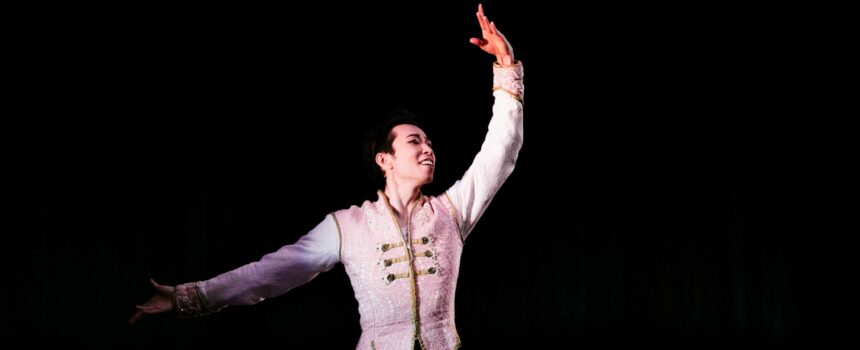
Join us as PBT’s own Yoshiaki Nakano discusses his World Premiere, Violin Pas de Deux.
About Yoshiaki Nakano

Yoshiaki Nakano, a native of Japan, joined PBT in 2010 and was promoted to principal artist in 2014. He received his training at the Elite Ballet Studio in Osaka, Japan, San Francisco Ballet School and the PBT School. Nakano won the gold medal at the 2013 Beijing International Ballet and Choreography Competition in China and the silver medal at the 2010 World Ballet Competition in Orlando, Florida. In 2014, Dance Magazine named Nakano among its top “25 Dancers to Watch.”
Yoshiaki has performed the roles of Prince Siegfried in Swan Lake, Basilio in Don Quixote, Albrecht in Giselle, Prince Désiré in The Sleeping Beauty, Solor and The Golden Idol in La Bayadère, Conrad and Ali in Le Corsaire, Romeo and Mercutio in Romeo and Juliet, the Nephew and Sugar Plum Cavalier in The Nutcracker and Tony in West Side Story Suite. He also has performed featured roles in George Balanchine’s Agon, Divertimento No.15, Rubies and Western Symphony, Twyla Tharp’s In The Upper Room and Nine Sinatra Songs, Jiří Kylián’s Petite Mort and Sinfonietta, William Forsythe’s In the Middle, Somewhat Elevated, and Jerome Robbins’s In the Night.
Nakano has choreographed more than 50 works, including pieces for PBT, Point Park University and multiple schools and companies in Japan.
He was named a PBT Choreographer-in-Residence in 2023.
About Violin Pas de Deux
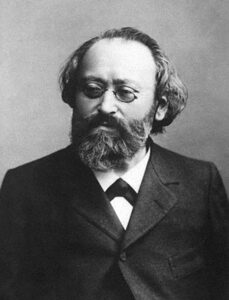
A romantic classical pas de deux, Nakano draws inspiration from the studio, the dancers, and the music when he choreographs.
Violin Pas de Deux is set to music from Max Bruch, a 19th-century German composer and violinist. Creating movement from a piece of music hundreds of years old, Nakano comments that his favorite part of choreographing this piece has been “finding some old and new choreography, especially in the partnering.”
• Watch PBT principal artists Hannah Carter and Lucius Kirst perform Violin Pas de Deux on Saturday, April 6th at 2pm and Sunday, April 7th at 2pm.
• Watch PBT soloists Jessica McCann and William Moore perform Violin Pas de Deux on Friday, April 5th at 7:30pm and Saturday, April 6th at 7:30pm.
Fun Facts
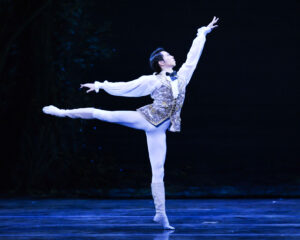
- Nakano’s choreography style is Neo-classical but he loves the super-classical style as well
- Nakano is married to PBT soloist Jessica McCann
- Nakano loves Pittsburgh because of the historic architecture and good restaurants
- Nakano owns an online ballet shop called “Ballet Gen”
- Nakano’s favorite role he’s ever played was Mercutio in Romeo and Juliet
- A defining role in Nakano’s career was debuting in Swan Lake as the Prince:
“The first time performing a full-length ballet is an experience that you will never forget. You grow as a dancer, artist and human.”
Read more about Nakano here.
Join us for Violin Pas de Deux and three other stunning pieces in Spring Mix from April 5-7, 2024 at the Benedum Center. Purchase tickets here!
Choreographer Jae Man Joo discusses “When Time Stands Still”

This year, PBT has the honor of producing the world premiere of celebrated choreographer Jae Man Joo’s When Time Stands Still. Join us as Joo discusses his work on this piece and as a choreographer.
About Jae Man Joo
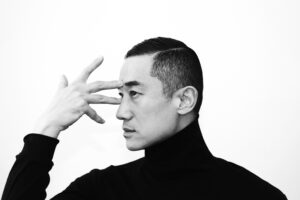 Jae Man Joo is an internationally acclaimed choreographer and the recipient of the prestigious 2009 Princess Grace Choreography Award. Hailing from Korea, he brought his unique artistic vision to the U.S. in 1996, where he served as the Associate Artistic Director of Complexions Contemporary Ballet. As a former principal dancer at Ballet Hispanico and Complexions, Jae Man Joo has worked and performed with a diverse range of choreographers, including William Forsythe, Dwight Rhoden, Shen Wei, Igal Perry, and Jessica Lang, enriching his artistic journey. Jae Man Joo was invited to create new works for Jacob’s Pillow in 2017 and 2019. He received the Best Individual Artist Award from the Bagnolet International Dance Festival in Paris, France.
Jae Man Joo is an internationally acclaimed choreographer and the recipient of the prestigious 2009 Princess Grace Choreography Award. Hailing from Korea, he brought his unique artistic vision to the U.S. in 1996, where he served as the Associate Artistic Director of Complexions Contemporary Ballet. As a former principal dancer at Ballet Hispanico and Complexions, Jae Man Joo has worked and performed with a diverse range of choreographers, including William Forsythe, Dwight Rhoden, Shen Wei, Igal Perry, and Jessica Lang, enriching his artistic journey. Jae Man Joo was invited to create new works for Jacob’s Pillow in 2017 and 2019. He received the Best Individual Artist Award from the Bagnolet International Dance Festival in Paris, France.
Joo’s artistic prowess has been recognized globally with the 2021 and 2023 Korea Dance Critics Choice Award, and the 2022 prestigious Korea E-daily Cultural Grand Prize for his full-length, evening ballet, Vita. These accolades are a testament to his profound influence on the dance world. He has created more than seven ballets for Complexions, all of which premiered at New York City’s Joyce Theater.
In 2023 he premiered the full-evening ballet Divine for Gwangju City Ballet, Korea, which received the Best Dance Art Work of the Year, 2023. He is currently an Assistant Ballet Professor at Point Park University as well as a Resident Choreographer, Ballet Master and Artist- in-Residence at Complexions Contemporary Ballet.
Joo started creating new work for Dallas Black Dance Theater for their spring season and for the newly-founded Korea Metropolitan Ballet company. For the latter he is creating his rendition of A Midsummer Night’s Dream, the company’s first complete evening ballet, which will premiere in the summer of 2024. In April, Joo will begin choreographing a work for American Ballet Theater’s “Unite” Series, working with ABT’s principal dancers Calvin Royal III and Herman Cornejo. It is set to be performed in August at the Joyce Theater in New York.
Read more about Jae Man Joo here!
Discussing When Time Stands Still

“Some people say being an incredible dancer is something you are born with! For me, it was slightly different, and I started ballet late, at the age of 15. In my opinion, becoming a great dancer is through so much sacrifice and hard work every day, going through these tough experiences, having goals, and so much love and passion for it.
These days, Ballet is incredibly complex and requires years of dedication and even more practice. I don’t think Ballet is changing. I think Ballet is Expanding to a new horizon.
We continue with the traditional classical Ballet and embrace it because it is such a beautiful and inspiring sight. But these days many choreographers working on different ideas and companies are adapting new movements and new concepts. Dancers must be versatile and learn to explore the quality of their movements, in addition to traditional ballet dance.
The ballet world in this age is a more dynamic range of styles and art forms performed by people with deep levels of passion. More than that, this devotion and dedication highlight the work’s beauty but, most importantly, what it means to be “Human.”
When you love Ballet, working in the studio, and performing in front of an audience, you aren’t aware of the time.”
It’s almost like time stops.
You are the moment—with your dance, with your partner, with your company members.
My new contemporary ballet portrays dancers—their hard work, their love, and their passion for dance.
TOGETHERNESS—sharing experiencing moments with each dancer in the company.”
What was your favorite part of choreographing this piece?
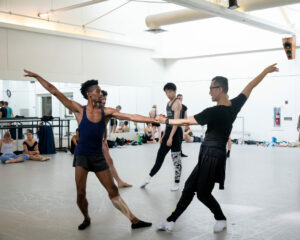 “Working in the studio, connecting with dancers and seeing their passion and energy. In traditional classical Ballet dancers have to be Swans or Princes, etc., and be characters.
“Working in the studio, connecting with dancers and seeing their passion and energy. In traditional classical Ballet dancers have to be Swans or Princes, etc., and be characters.
My new ballet is an opportunity for dancers to be themselves so they can share their passion and their gift with the audience.
At the same time, they can grow and continue their beautiful dance journey. I love rehearsing in the studio. It’s priceless. It’s a moment of discovery and sharing my vision, and they dance my heart out, try new things, and explore their possibilities. I loved every minute of working in the studio. I always tell dancers that performance is only the cherry on top of the cake, but rehearsal—a process of making and creating—is the cake.”
Where did you draw inspiration for your piece?
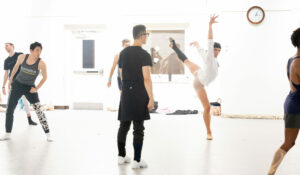 “I came to the U.S. with 2 suitcases and a little bit of cash in my hands. I worked so hard to get where I am at now. I was looking back when I was a dancer and seeing these young dancers now. I felt their passion, and I wanted to celebrate their hard work and their humanity on the stage.”
“I came to the U.S. with 2 suitcases and a little bit of cash in my hands. I worked so hard to get where I am at now. I was looking back when I was a dancer and seeing these young dancers now. I felt their passion, and I wanted to celebrate their hard work and their humanity on the stage.”
What choreographers do you look up to?
“That’s a tough question. I look up to William Forsyth and Mats Ek, but I got so much inspiration from so many people, also from Current young choreographers, who are so creative and beautiful. It is so exciting to see.”
How do you begin your creative process when choreographing?
 “I had my choreography assistant with me. I created substantial movement phrases before rehearsal began, and I edited a lot after I met them and found their strength, individuality, and personality.”
“I had my choreography assistant with me. I created substantial movement phrases before rehearsal began, and I edited a lot after I met them and found their strength, individuality, and personality.”
How many works have you choreographed?
“As a resident choreographer in Complexions Contemporary Ballet, I have created seven works, all of which premiered at the NY Joyce Theater. I have choreographed for many diverse American companies and also worked internationally. I have set many works for Korea, and I’m currently working on my rendition of A Midsummer Night’s Dream.”
Is there anything else you’d like to share with the audience?

“I hope the audience can feel and understand these dance artists’ humanity, hard work, athleticism, and pure desire to show how much they love dance. The company continues this excellent high-level ballet company’s history with a new art direction.
New history will be made again and again.”
Join us as our dancers “share their passion and their gift with the audience” in PBT’s Spring Mix from April 5-7, 2024 at the Benedum Center. Purchase tickets here!
Rehearsal Photography: Aviana Adams
PBT Dancers Share Favorite Moments of “Petal”

High-octane, sensual, vivacious, lively, vibrant, a barely contained riot of wildflowers.

Photo By: Mihaela Bodlovic
These words and phrases have all been used to describe Helen Pickett’s dynamic Petal. With spring in the air, Petal is the perfect celebration of connection, exuberance, and joy. In Pickett’s own words:
“Intimacy is such an important part of a human life – without it, we wither. So how do we break that fourth wall and connect to the audience more than just visually? Let’s celebrate this burst of color, this sound, this touch.”
Read more about Helen Pickett here.
PBT had the honor of performing Petal once before in 2021 and is excited to perform it again as part of the Spring Mix program from April 5-7. Join PBT dancers as they look back on Petal, both then and now.
TOMMIE LIN O’HANLON – PBT PRINCIPAL ARTIST
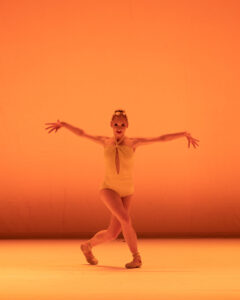
Photo By: Rosalie O’Connor
“My favorite part of dancing Petal is the athleticism of the piece. The strength and stamina that it takes to perform this ballet is not to be underestimated.
Another favorite is having the opportunity to work so closely with Helen Pickett on one of her most famous works. I always am left feeling inspired with wisdom from her that I take into future ballets. She really helps us as dancers expand our movement and push for “the edges” of our shapes. She has taught me so much and I am so grateful for her.
This time is particularly special because I am getting to revisit this ballet as a principal dancer! I’m so excited for everyone to see how much I have grown and matured as a dancer. I actually have not revisited a featured role, like this, yet in my career, which I think is so exciting!”
DIANA YOHE – PBT SOLOIST
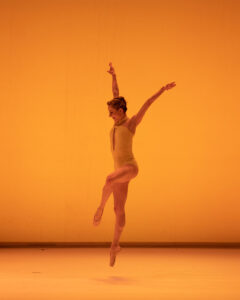
Photo By: Rosalie O’Connor
“Petal was incredibly special because it was the very first thing we performed at the theater after Covid shut the world down. I remember really feeling the magnitude of that moment, especially since the Benedum curtain came up and Petal begins with me doing a solo. That performance for us all felt like the world was coming back to life and we were finally returning home.
Petal is a true celebration of joy in movement and human connection. Helen came in and really pushed us all to dance more three-dimensionally (bigger and brighter but also not being afraid of the power we have in stillness), to trust ourselves and our choices and most importantly to remember that dancing together and celebrating each other is the center of it all. You’re really encouraged to watch each other any chance we get, and seeing my colleagues grow and dance their heart out inspires me to do the same.
I felt like I returned to the stage a different dancer after everything I learned from Helen and her piece and I’ve loved continuing to expand on it all. When you get to dance a piece again it really shows the journey that’s happened to you in between and how much you’ve grown and changed as a person, not just as a dancer. I’m really looking forward to sharing this piece and its fantastic energy with the Pittsburgh audience again. It is one that is especially close to my heart!!”
KURTIS SPROWLS – PBT CORPS DE BALLET

Photo By: Rosalie O’Connor
“I am excited to be bringing Petal back to the Benedum Stage. One of my favorite things about the piece is its theme of connection. Not only is there a connection between our movements, but also by how we emotionally react to one another in a genuine, human way. I honestly forget the audience is watching. I have had the pleasure to work with Helen a number of times, and I am always inspired by the experience. Petal is truly a showstopper!”
Join us for Petal and three other dynamic pieces in Spring Mix from April 5-7, 2024 at the Benedum Center. Purchase tickets here!
Beauty and the Beast- Comparing the Disney Movie & the Ballet
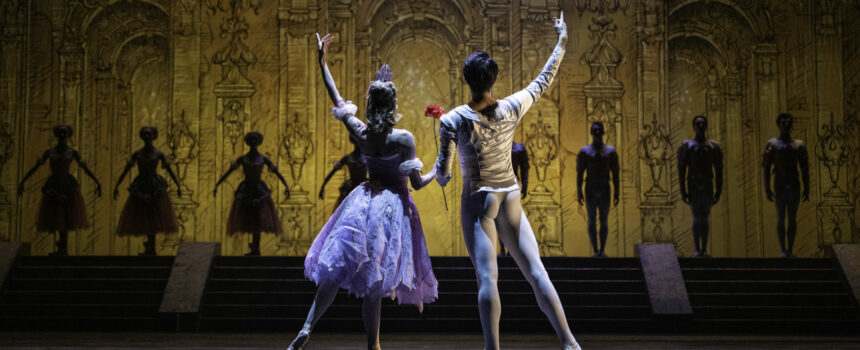
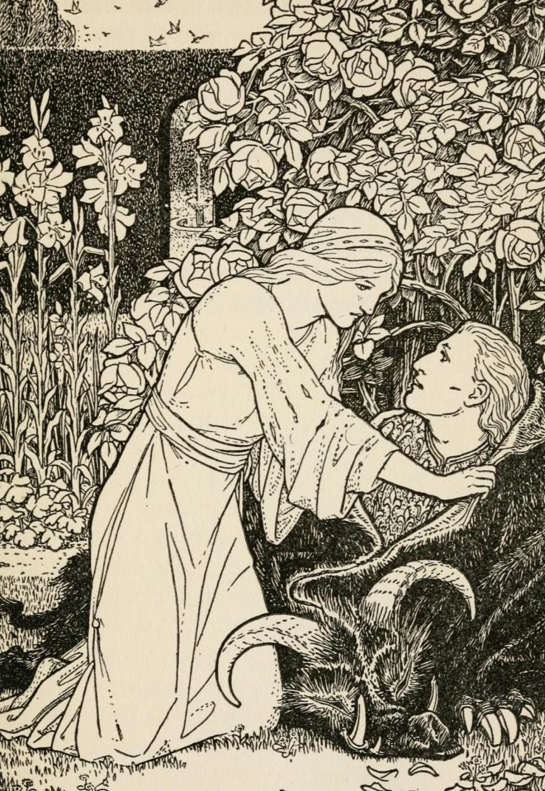
Pittsburgh Ballet Theatre will present Beauty and the Beast at the Benedum Center from February 16-25. This whimsical, imaginative work with charming characters and challenging choreography has turned a classic fairytale into an enchanting storybook ballet. Audiences of all ages will delight in this ballet as it illustrates that “there is often more than what meets the eye.
It’s a tale as old as time, but how close is PBT’s Beauty and the Beast ballet to the story of which most people are accustomed?
PBT performs a ballet adaptation of Beauty and the Beast choreographed in 1958 by Lew Christensen, an influential dancer and choreographer who worked with the famed George Balanchine and served as artistic director of the San Francisco Ballet for 32 years.
While maintaining similar characteristics to the widely-known Walt Disney Pictures Beauty and the Beast, Christensen’s version was choreographed before the movie was produced and shares more of a likeness to earlier published versions of the beloved story.
A History of Beauty and the Beast
1740: There are fairytales from cultures all over the world that share elements of the Beauty and the Beast story. However, the first known publication of this specific tale (La Belle et la Bête) was written in 1740 by French novelist Gabrielle-Suzanne Barbot de Villeneuve.
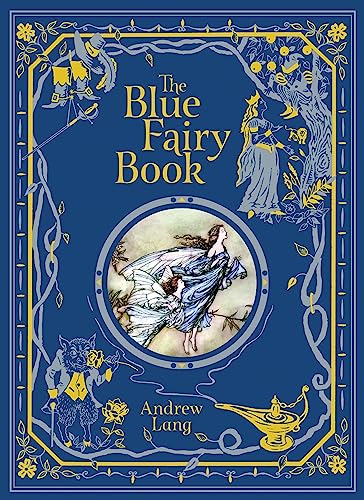
1756: Villeneuve’s lengthy version was abridged, rewritten, and published by French novelist Jeanne-Marie Leprince de Beaumont.
1889: Scottish poet and novelist Andrew Lang published the Fairy Book series, a collection of 12 volumes of traditional fairy tales. In the first of these volumes, The Blue Fairy Book, he published “Beauty and the Beast,” alongside classic tales like “Hansel and Gretel,” “Aladdin and the Wonderful Lamp,” “Little Red Riding Hood,” “The Forty Thieves,” and “Snow-White and Rose-Red.”
1958: Lew Christensen choreographed a brand new ballet in celebration of San Francisco Ballet’s 25th anniversary, set to orchestrations by famed composer Tchaikovsky. Praised as “the most delightful, imaginative, enchanting and accomplished ballet production to grace the Opera House stage,” by the San Francisco News, this ballet has been revived numerous times over the past 65 years by ballet companies like PBT.
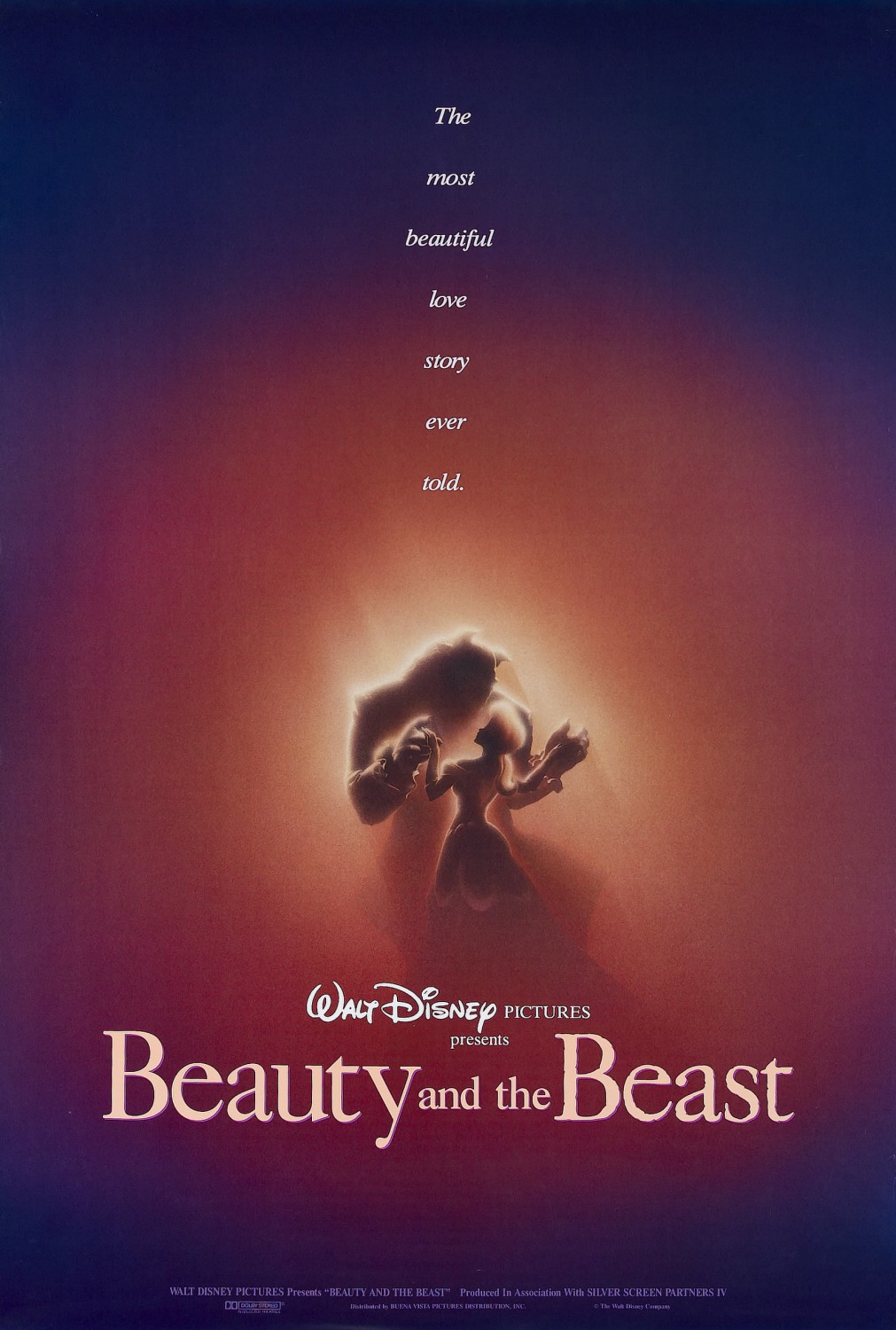
1991: Walt Disney Pictures released the animated film that has become famous around the world. The movie was wildly successful, winning the 1991 Golden Globe Award for “Best Motion Picture – Musical or Comedy” and the Academy Awards for both “Best Original Score” and “Best Original Song” for its titular song.
1994: Beauty and the Beast became Disney’s first animated film to be adapted into a Broadway musical.
2017: Walt Disney Pictures produced a live-action remake starring Emma Watson.
Since Villeneuve’s 1740 publication, there have been hundreds of books, movies, stage productions and TV shows adapting the story.
Comparing the Versions
| Story Elements | The 1991 Disney Movie | The PBT Ballet |
| Beauty’s Capture | After wandering into the Beast’s castle and making himself at home, Belle’s father is imprisoned. Belle offers to stay as the Beast’s captive in exchange for her father’s freedom. | Beauty’s father picks a rose from the Beast’s garden for his daughter. In anger, the Beast holds Beauty captive and banishes her father. |
| Characters in the Castle | A curse on the castle has transformed the staff into enchanted household objects like clocks, teapots and candlesticks. These characters become Belle’s friends. | Beauty is comforted and entertained by enchanted flowers, caryatids (statues), simians (monkeys), and bluebirds in the enchanted castle and gardens. |
| Villians | Belle is pursued by the boorish Gaston, who later challenges the Beast for Belle’s affection. | Beauty has multiple jealous sisters at home who envy the beautiful gifts the Beast has given her. |
| The Beast’s Death | In a fight to the death with Gaston, the Beast is fatally stabbed. Upon his death, Belle admits her love for him and his curse breaks, bringing him back to life as a handsome prince. | Terrified of the Beast and longing for her family, Beauty flees the castle. Grief-stricken, the Beast dies of a broken heart. After returning home, Beauty realizes her affection for the Beast, and returns to the castle to find him lifeless. Heartbroken, Beauty sobs, now knowing that she loves him. The Beast stirs and tears away his clothes and fur to reveal a handsome prince. |
We know you’ll be enchanted by PBT’s Beauty and the Beast! Showcasing the transformative power of love, the ballet is completed with stunning choreography, gorgeous costumes, and spectacular sets. Join us at the Benedum Center from February 16-25!
PBT Artists Childhood Nutcracker Memories
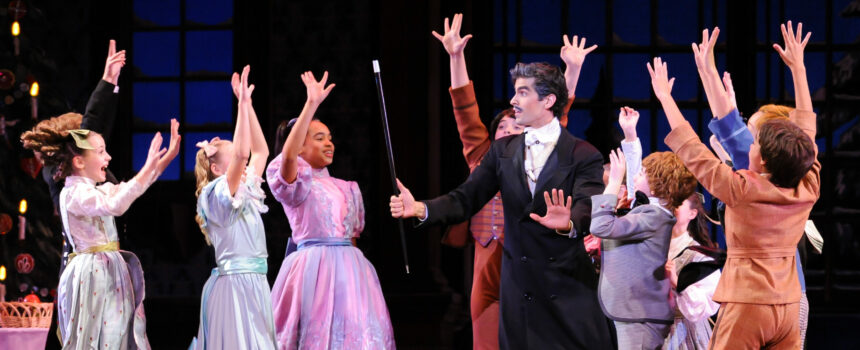
“The children were nestled all snug in their beds,
While visions of sugar-plums danced in their heads.”
For some children, those sugar-plums danced not only in their heads but also alongside them onstage. The Nutcracker is the first ballet in which most ballet dancers perform and many dancers hold treasured childhood memories of their first Nutcracker. We asked our company artists to share some of those memories:
Ariana Chernyshev – PBT Apprentice
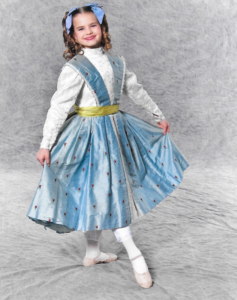
What role (s) did you play in your first Nutcracker performance?
“My first experience with The Nutcracker was in 2008, and it was absolutely unforgettable! I was the Little Party Girl, which was an honor since only two girls from the youngest age division are selected for this role.”
What school did you dance with at the time?
Currently a company apprentice, Ariana was trained from Pre-Ballet all the way through the Graduate program at PBT School.
What memories do you have of being onstage?
“I was fully enraptured by the sets, costumes, lights and the older dancers having their final moments to practice before the show. After my first entrance, my nerves transformed into pure elation and that first show of The Nutcracker became the memory that I hold in my heart as the moment I knew I would do anything to become a ballerina.
What about it made you want to be a professional dancer?
“As a young dancer performing child’s roles in The Nutcracker, I always wanted to be a Snowflake. I thought that the older dancers were so beautiful, graceful and powerful, especially with their gorgeous crowns and fluttery tutus.”
Caitlyn Mendicino – PBT Corps de Ballet

What role (s) did you play in your first Nutcracker performance?
“My first performance of The Nutcracker was actually Terrence S Orr’s version (PBT’s current version); I was a little soldier. I wore the blue and white soldier costumes that we still use in PBT’s Nutcracker. Back then however we also had white masks we wore as well.”
What school did you dance with at the time?
What memories do you have of being onstage?
“I remember running through the castle on stage and thinking how intense the whole battle scene was and how proud I was to salute Marie.”
What was your favorite part of being in the performance?
“Definitely being on stage with my dance idol at the time, Ying Li.”
What about it made you want to be a professional dancer?
“I loved being on stage and being immersed in the story. When you’re so small you feel like you’re actually transported to a toy battlefield.”
Cecilia Hernandez – PBT Apprentice
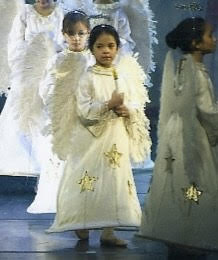
What role (s) did you play in your first Nutcracker performance?
“In my first Nutcracker, I was 4 years old and I played a mouse in Act 1 and an angel in Act 2. As a mouse I wore a grey loose onesie with a hood that had the cutest mouse ears attached. And pictured is my Angel costume.”
What school did you dance with at the time?
“I danced with my home school, Nunnbetter Dance Theatre.”
What memories do you have of being onstage?
“I can only remember kneeling on the side of the stage as an angel, watching the Sugar Plum Fairy dance, and being in awe.”
What was your favorite part of being in the performance?
“My favorite part of the performance was looking up at the older girls doing so many different roles. I don’t have many vivid memories from that very first Nutcracker performance but I can absolutely picture being backstage and watching the Sugar Plum Fairy that year preparing, talking to stagehands, and smiling. I think I was too young to know that’s exactly what I wanted to do with my life, but it makes sense that’s the only vivid memory I have.”
David O’Matz – PBT Corps de Ballet

What role (s) did you play in your first Nutcracker performance?
“I played Fritz in Ballet Academy of Pittsburgh‘s production.”
What memories do you have of being onstage?
“I wanted to keep the fact that I was in the production a surprise, so my whole family attended the performance in the audience and saw me onstage once the curtain rose.”
What was your favorite part of being in the performance?
“It was fun to run around onstage, act, dance, and befriend other dancers backstage and throughout the rehearsal process. This is when I met Tommie O’Hanlon (PBT principal artist) for the first time!”
What about it made you want to be a professional dancer?
“I found joy within both rehearsing and performing The Nutcracker. Every year I have experienced a new familiarity of performing the same ballet year after year, and joy to experience new roles and learn new parts. This all started with my first Nutcracker.”
Diana Yohe – PBT Soloist

What role (s) did you play in your first Nutcracker performance?
“My very first Nutcracker was in 2004 with Pennsylvania Ballet (now known as Philadelphia Ballet) when they toured to Cleveland. It was George Balanchine’s version and I was a child in the party scene.”
What memories do you have of being onstage?
“I remember telling my parents every time about being lifted across the stage to reach for the Christmas tree by one of the company men.”
What about it made you want to be a professional dancer?
“That Nutcracker definitely inspired my passion for ballet and my career. I always try to remember how those kind company dancers changed the direction of my life when I do The Nutcracker each year with the kids! It really is all about them, and I think for the kid in all of us as well.”
JoAnna Schmidt – PBT Soloist

What role (s) did you play in your first Nutcracker performance?
“My first performance in The Nutcracker was with Central Florida Ballet, when I was seven years old. I got to be a party girl and one of Mother Ginger’s bon bons! I hadn’t learned how to do a cartwheel yet, and that was part of the choreography for the bon bons. I remember my mom demonstrating one for me in our living room!”
What school did you dance at at the time?
What memories do you have of being onstage?
“This photo is from a couple years later. One of my favorite dancers and greatest mentors, Heather Fryxell, let me wear one of her tutus to promote the performances at a hotel, across the street from the theater.”
What about it made you want to be a professional dancer?
“Even though I was simply walking around, taking photos, just getting to Look like the Sugar Plum Fairy was so magical to me. Now, with PBT, I get to fully step into that role, dancing as the Sugar Plum Fairy in our production! It is my inner child’s dream come true!!!”
Join us this year to make your own memories of The Nutcracker and watch these little dancers – now all grown up -in PBT’s The Nutcracker this December! Performances will run December 8-28 at the Benedum Center. Find tickets here!
